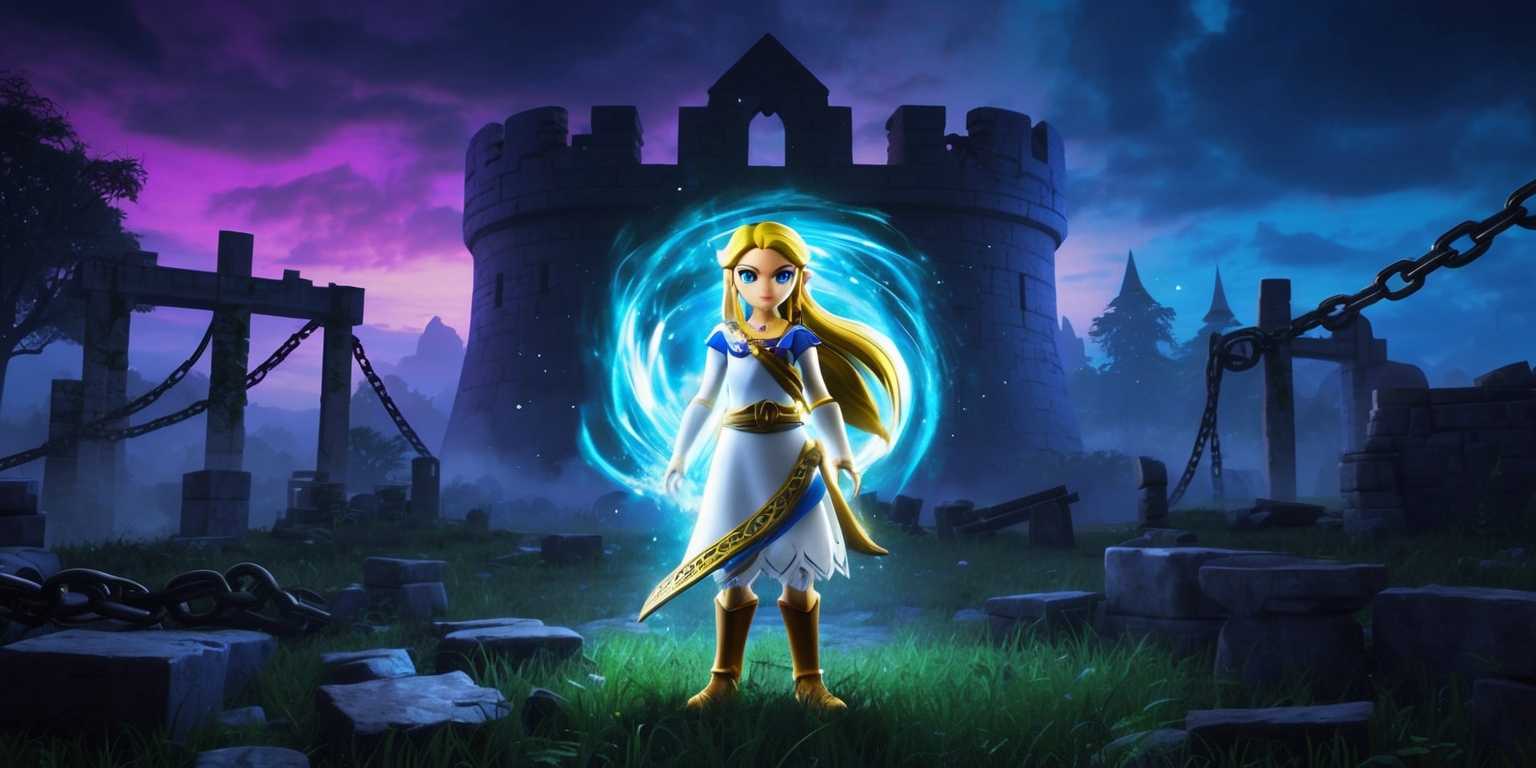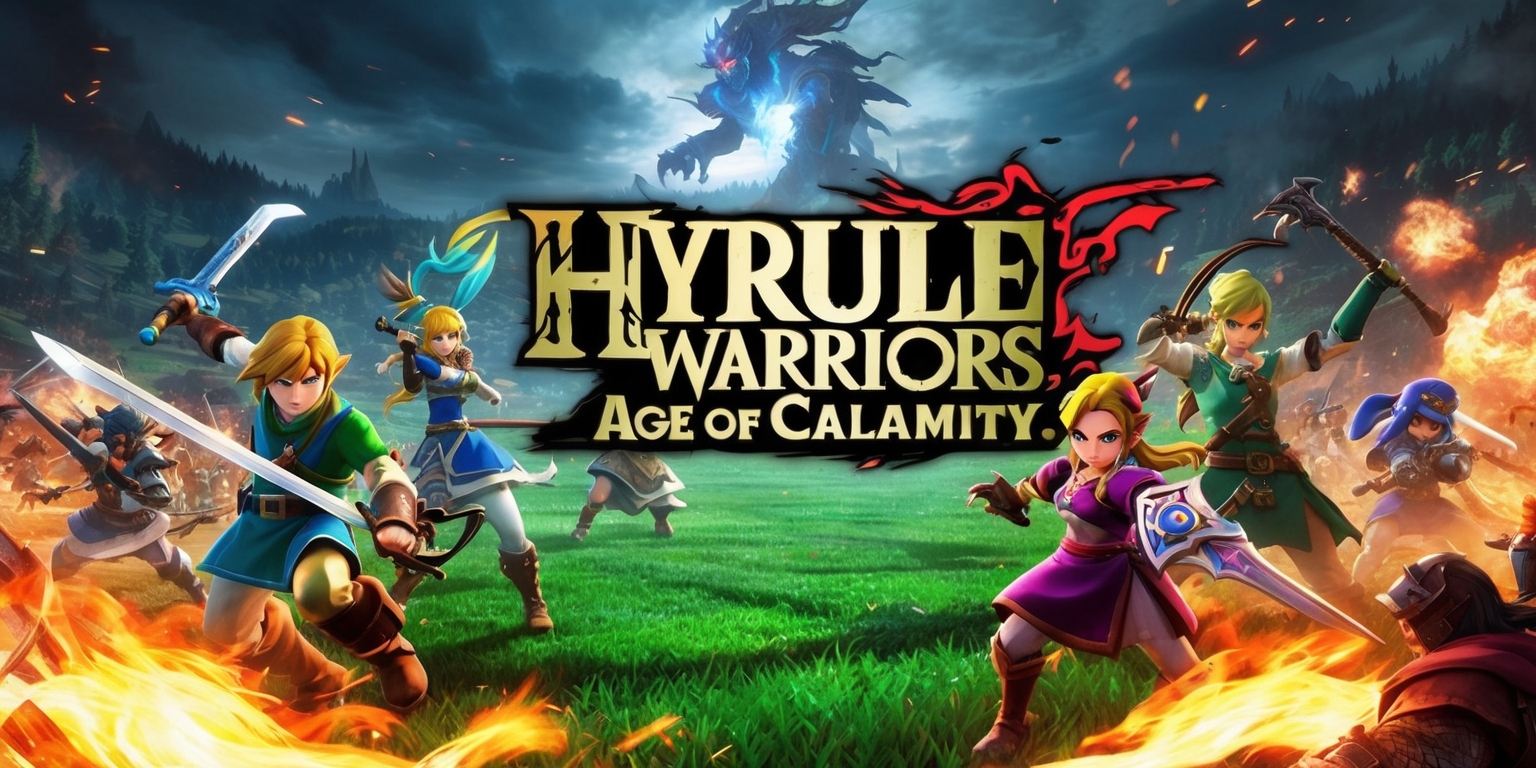Hyrule Reborn: Zelda's Prequel Saga in Age of Imprisonment
- 2025-11-17 05:06:30

The expansive realm of Hyrule unfolds once again as a vivid tapestry of legends and innovation. In this prequel experience of Tears of the Kingdom, familiar yet reimagined characters burst into life through a fresh perspective led by Princess Zelda. The narrative transports players to an epoch where past alliances and emerging evils intertwine, inviting longtime Devoted enthusiasts and fresh visitors alike to immerse themselves in a story that both honors tradition and experiments with action-driven gameplay. Every facet of the game—from its combat nuances to its environmental design—offers intriguing layers that echo the rich heritage of Zelda while boldly venturing into uncharted territory.
The Legacy of Zelda's Era
Stepping into the narrative, Hyrule Warriors: Age of Imprisonment casts Princess Zelda in a leading role that redefines her persona beyond her storied past. In a timeline intricately linked to Tears of the Kingdom, Zelda takes center stage in a historical conflict that preempts later events, forging a bond with Hyrule’s founding rulers. The game weaves together elements of classic Zelda storytelling with a dynamic, action-packed framework. The lore is detailed through encounters with characters like King Rauru and Mineru, whose brief appearances in previous adventures now gain depth and warmth. This incarnation of Zelda, armed with a light-powered beam saber, is both intellectually sharp and fiercely combative, inviting players to experience the rich legacy of her era through a revitalized lens.
Chronicle of a Prequel Adventure
By reimagining the timeline of one of gaming's most cherished sagas, Age of Imprisonment invites players to explore the events that shaped the course of Hyrule. Set against the backdrop of an unfolding conflict with Ganondorf’s nefarious influence, the game offers a characters-first approach that enriches the main series narrative. The historical setup, although sometimes predictable in its progression, allows players to immerse themselves in familiar lore while experiencing fresh twists in the storyline. The prequel backdrop, interlaced with time-travel mysteries and alliances with different clans, gives life to a period that has been quietly concealed in the darker recesses of the main games. As you engage with these transformed historical figures, every mission further elevates the status of Zelda’s formative years.
Expanding the Zelda Lore
The narrative fabric of Hyrule expands significantly in this prequel, offering deeper insights into threatening forces and ancient mysteries. The resurgence of long-dormant humanoid constructs and the summoning of fiendish enemies by a twisted power enrich the game’s mythos while maintaining a delicate balance with canon material. These lore expansions are reminiscent of the storytelling approach that likens an ongoing anime series to a cinematic release, where each new chapter builds without drastically altering a larger narrative. The deliberate introduction of non-canonical adventures infuses a sense of wonder and curiosity among players. This blend of history and innovation allows the game to explore narrative branches that, while offering little in way of lasting consequences, evoke a unique charm and nostalgia for the broader Zelda universe.
Diverse Character Dynamics

The character ensemble in Age of Imprisonment is wide-ranging and thoughtfully designed. Princess Zelda stands out not only by channeling the legacy of the series but also by her interactions with a host of new and old figures. The charm of characters like King Rauru, Mineru, and a newly introduced, charismatic traveler named Calamo is that they each contribute distinct flavors to the narrative. While some of the historical figures may lack the depth seen in previous incarnations, the introduction of spirited newcomers compensates by adding layers of humor and intrigue. For instance, Calamo’s journey through various realms and races provides a refreshing counterbalance to the weighty responsibilities borne by the sages. The game orchestrates these relationships in a way that enriches the unfolding drama and highlights the multifaceted nature of life in Hyrule.
Visual Brilliance and Artistic Detailing
Graphically, Age of Imprisonment is a visual feast that harmoniously merges traditional Zelda aesthetics with sleek modern design. The rich color palettes capture the mystique of Hyrule’s numerous regions, from the verdant pathways of its ancient forests to the eerie, shadowy corridors that hint at lurking dangers. Each battlefield is painstakingly detailed to reflect the grandeur of the universe established by previous titles, with subtle nods to classic designs while embracing innovative lighting and texture techniques, courtesy of the enhanced console hardware. The developers have succeeded in creating environments that, although sometimes linear in their design, still evoke wonder and nostalgia. This deliberate design choice ensures that while every scene is crafted with care, the focus remains on a fast-paced, action-oriented gameplay experience.
Combat Mechanics and Fluid Action
The heart of Hyrule Warriors: Age of Imprisonment lies in its invigorating combat system, which marries classical melee dynamics with modern action elements. At its core, players experience a cascade of rapid strikes, flashy combo maneuvers, and skillful dodges that reward precise timing and strategic play. The combat system remains accessible, allowing seamless transitions between light and heavy attacks while offering special moves tailored to each character’s strengths. Intricate mechanics such as sync strikes add a layer of dynamism that magnifies the impact of every confrontation. This nuanced layering of combat moves, enriched with responsive controls and fluid animations, makes each encounter feel like an adrenaline boost. The emphasis on spectacle is underscored by on-screen tallies of successive foes, which elevate the thrill of orchestrating large-scale battles against an ever-growing horde of adversaries.
Cooperative Play and Party Dynamics
Reflecting on the cooperative potential that series veterans hold dear, Age of Imprisonment introduces refined mechanics that emphasize party synergy. Switching seamlessly between characters with the intuitive d-pad features a significant role in navigating expansive battlefields. The game’s AI-controlled squad members are smartly positioned to support the primary player, ensuring that strategic combat decisions are met with capable in-game responses. This system minimizes unnecessary micro-management, yet still offers full control to those who desire tactical precision. With the option for cooperative play, friends can join forces, each contributing unique abilities to create an interconnected network of heroes. The depth provided by these multi-hero engagements is designed to evoke a sense of camaraderie and collective strength amid the chaos of the ever-intensifying battles.
Innovation Through Zonai Gadgets
The introduction of zonai gadgets in this installment marks a significant evolution from previous iterations of the game. These diverse devices add a layer of tactical versatility to battles, offering players tools that range from flamethrowers and makeshift bombs to contraptions that mirror classic building mechanics. Although the game does not delve into actual construction, the gadgets carry the spirit of creativity and innovation, providing dynamic ways to approach combat and solve situational challenges. The ingenious design of these gadgets, complete with rechargeable energy systems, compels players to experiment with elemental interactions, exploiting enemy vulnerabilities with precise countermeasures. This gameplay mechanic injects renewed energy into encounters, encouraging a blend of brute strength with clever, tactical maneuvers that redefine the standard Warriors experience.
Environmental Design and Mission Layout
The structure of Age of Imprisonment’s missions Prioritizes firsthand interaction with the enemy, yet it occasionally falls short in exploiting the full potential of its sprawling environments. While the vast lore is rendered through painstaking artistic detail, many combat scenarios unfold within deliberately constrained spaces that feel more like corridors than immersive landscapes. The design approach, which channels a linear progression through predefined zones, may sometimes restrict the sense of adventure in open expanses. This is particularly noticeable in new areas such as the high skies and subterranean depths, which, though visually impressive, are underutilized as arenas of epic confrontation. The deliberately simplistic layouts, while intended to maintain focus on combat, leave certain missions without the expansive, exploratory feel that could have elevated the overall experience further.
Arcade Elements and Zone-Based Challenges
In addition to traditional hack-and-slash engagements, Hyrule Warriors: Age of Imprisonment incorporates arcade-style mini-games that heighten the overall gameplay experience. Specifically, the sections inspired by legendary Divine Beast encounters have been reimagined into shooter-like challenges where timing and precision take center stage. These segments, though visually distinct and energetically paced, diverge from the intricate design of earlier incarnations. They function as a refreshing break from the main narrative, inviting players to engage with a different style of interactivity that resembles classic arcade games. The zone-based challenges are clever in their design, offering a contrast to the ground battles and testing players with alternative combat dynamics. This divergence not only accelerates the action but also reinforces the spirit of experimentation that permeates the game’s overall design philosophy.





